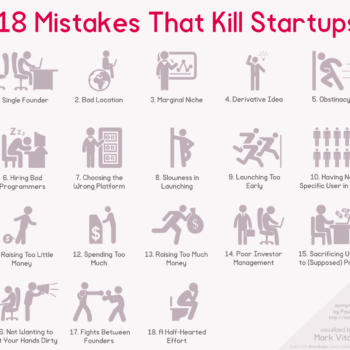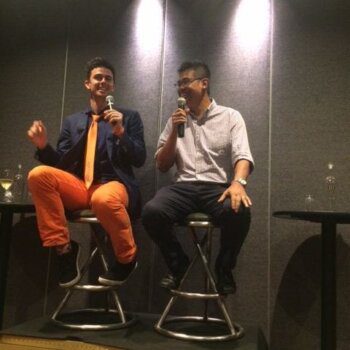This is the Asian Century. The region is changing faster than arguably anywhere at any time in history, and innovation is at the heart of this transformation. In our new monthly series, Innovation Asia, we’re exploring new ideas, technology and entrepreneurship across the continent, one city at a time. But what is the big picture? In our first instalment, we look at how the winds of innovation are ready to swing east.
SIX YEARS AGO, six people met in a Hong Kong coffee shop. They were there to share ideas, exchange contacts and give each other support as they embarked on the uphill slog of making their startup businesses a success. ‘At this early stage, there was more enthusiasm and ideas than investors and proper business plans,’ says Casey Lau, one of the co-founders of the group, StartupsHK. ‘Some of those early birds fizzled but the ones with sound ideas are still around today.’
The potential, however, was clear and the StartupsHK gatherings soon gained traction. Now the group has more than 10,000 people in its network and can no longer find a coffee shop big enough for its meetups. This story has parallels across Asia.
Asia is innovating. It always has been. The continent has a rich history of manufacturing, from fabric to toys to electronic goods, and today we are in the midst of Asia’s new wave of innovation. Now it is about the connected devices of the vast Internet of Things (IoT) and the plethora of services and apps in the realms of FinTech to MedTech. Innovation is present in every facet of life – and in the Asian Century, our region is very much in the spotlight.
That’s why we’re launching Innovation Asia, a new monthly series exploring new ideas, technology and entrepreneurship across our region. Each issue we will travel to a new city to meet the disruptors and enablers; explore the key innovations that are being championed; find out how the entrepreneurial community, government and business are getting these ideas funded and turning them into viable ventures; and look to uncover the one idea that could change everything. Ultimately, we want to answer this question: how is innovation shaping modern Asia?
BUT WHAT IS INNOVATION?
Already, the term ‘innovation’ is everywhere. It’s used in slogans, catchphrases, corporate-speak and media. But what does it really even mean?
Innovation is essentially about problem solving, says Bin Luo, managing director of the Microsoft Accelerator in Beijing. Luo’s organisation operates in eight countries, with locations in Beijing and Bangalore, and has had 454 startups graduate from its programme. And he argues that startups are the engines of transformation. ‘They challenge the status quo, disrupt stagnant industries, bring new services to customers and help solve problems,’ he says. ‘In this context, we see innovation as the way to articulate a solution to an unaddressed problem by building more intelligence into it, making it faster or scaling it bigger. It’s the key ingredient to meaningful advances not only in technology, but also in business.’
If problems are the starting point for innovation, another question arises in our multifaceted, multicultural world: how does the definition of innovation differ between countries? Infrastructure and funding aside, are the core drivers and aims for entrepreneurs different in, say, London and Chongqing?
Simon Squibb is the chief executive and founder of angel-investment firm Nest, which runs accelerator programmes in Hong Kong and Singapore, and has additional offices in Nairobi, London, Paris and New York. He argues that the basic instinct of an entrepreneur from China and one from the US is the same. ‘They have a purpose; they want to succeed. However, what is different is that the entrepreneurs here have an Asia-first strategy. The problems they are solving might be problems America has never even heard of,’ he says. ‘I heard of an app that checks whether the medicine that you have been given is real. In China, Africa and India that might be an issue but it’s not a common problem in America.’
Luo adds: ‘Trends exist in the type of startups that are likely to emerge based on geography. Israel will have a higher rate of security-related startups compared to others since the military is a big feeder to their ecosystem, for example. However, the attributes of success are borderless. The size of the idea, the strength of the team, the ability to rapidly execute and scale are just a few universal attributes of success we have seen.’
A CHANGING REPUTATION
A problem for Asian innovators is the continent’s image. Some in Silicon Valley sneeringly point to Asia as merely the home of copycats and me-too companies, but entrepreneurs with deeper knowledge of the region argue that this is unfair. Bay McLaughlin is the co-founder of Brinc, an IoT platform for startups with offices in Hong Kong, Shenzhen and Guangzhou. ‘If you look at what different entrepreneurs are doing in China, it’s impressive. In IoT you can see beautiful designs that may or may not have been influenced by the West, but they are applying them to a different group with different socio-economic needs and abilities,’ he says. ‘There is real innovation in business models and e-commerce direct-to-consumer delivery and design. It’s a good tagline to say that people out here can only copy, but it’s just not true.’
Meanwhile, the success of Asian technology companies is beyond doubt. With a purported worth of US$46 billion (HK$360 billion), Asian gadget maker Xiaomi is currently second place on CB Insights’ real-time ‘unicorn’ tracker, a ranking of the world’s startups worth more than US$1 billion (HK$7.8 billion). Only Uber is worth more. In addition, 44 of the other 162 unicorns on the list were born in Asia.
But Asia is contributing to global innovation not just through its big-name companies. Talent and ideas are moving both ways – into and out of the region. In some ways, argues Squibb, geography is becoming increasingly obsolete. ‘Don’t think about drawing lines. I can create an app here in Hong Kong and get it into the App Store in the US easily,’ he says. McLaughlin adds: ‘We’re already seeing more and more founders and investors who can do the East and the West.
They are taking the best of both worlds and putting them together. The most successful firms are going to be the ones who figure out how to keep doing this.’
MASSIVE INVESTMENT POTENTIAL
In Asia, the sheer vastness of the market presents huge opportunities. One illustration of the market size – and the tech savviness of its members – can be seen during Lunar New Year, when Chinese traditionally give out money gifts to family, friends and colleagues. Increasingly,
the ‘red packets’ are instead being sent electronically. Business news site Enterprise Innovation reported in April that eight billion gifts were sent via WeChat’s payment service leading up to the holiday, eight times more than last year. The report added: ‘The total cloud services spending in Asia Pacific and Japan is also predicted to hit US$11.5 billion by 2018.’
China has initiatives pushing entrepreneurism, including Made in China 2025 and Internet Plus. But despite the potential, some think the level of investment isn’t where it needs to be yet. Speaking at The Economist’s Innovation Summit last year, Joe Kelly, head of innovation at Huawei, stated simply: ‘The confidence is here, the ambition is here, but maybe the investment isn’t quite so readily available.’
If we build the ecosystem, they – the investors – will come. Asian cities’ strengths are in their differences from more established startup communities but also in the differences among the continent’s 51 countries. We’re excited about celebrating this shared spirit and we hope, over the next few months, you’ll get the very real sense that innovation is at your very doorstep.
___________________________________
About this Article
This article is part of the “Innovation Asia” series launched by SILKROAD. SILKROAD is the flagship inflight publication of Hong Kong’s Dragonair. The series focuses on new ideas, technology and entrepreneurship across the region, one city at a time. The first issue is themed around ‘innovation’ with various other stories championing the technology and the start-up landscape.
‘Asia is innovating… That’s why we’re launching Innovation Asia, a new monthly series exploring new ideas, technology and entrepreneurship across our region. Each issue we will travel to a new city to meet the disruptors and enablers; explore the key innovations that are being championed; find out how the entrepreneurial community, government and business are getting these ideas funded and turning them into viable ventures; and look to uncover the one idea that could change everything.’ – SILKROAD

Stay tuned for the next installment which will be focusing on “Hong Kong: The FinTech & MedTech Hub”.
You can find Silkroad onboard all Dragonair flights.Dragonair is the sister airline of Cathay Pacific.





























